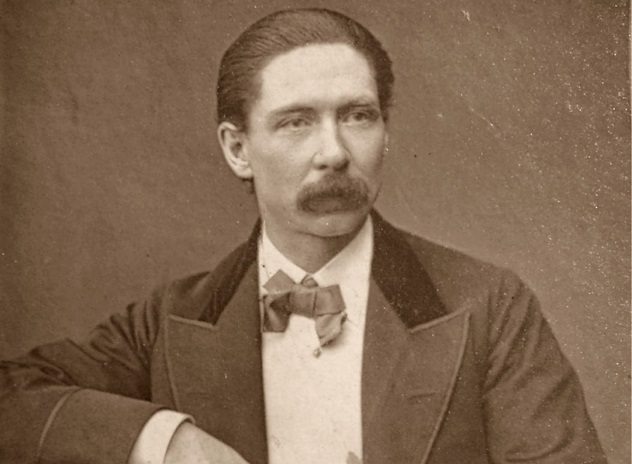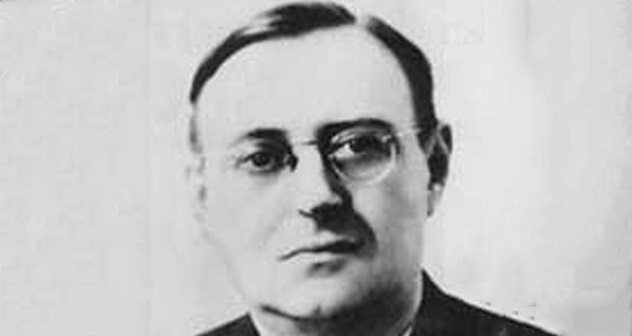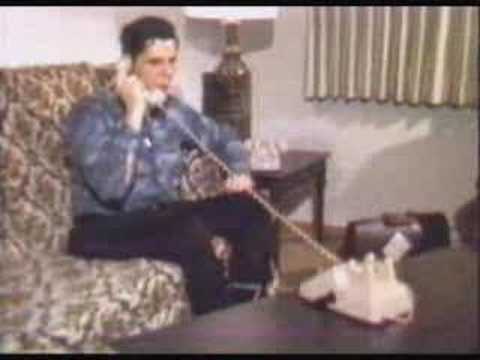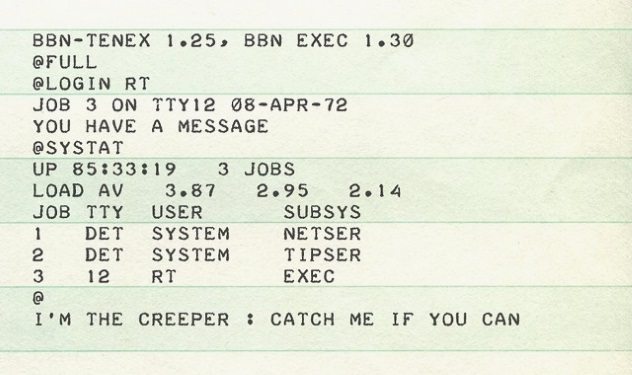Long before computers, hackers were already around, breaking into phone networks, punch-card machines, and even into telegraphs. Some hackers plied their skills for profit, while others did so for more altruistic purposes. And of course, a few hacked for the time-honored tradition pranking others.
10 Nevil Maskelyne Hacked A Wireless Telegraph Demonstration: 1903
The second it became physically possible to hack into something, somebody did it. That somebody’s name was Nevil Maskleyne, history’s first hacker, and he was around a lot earlier than you might expect. He hacked into a live telegraph demonstration in 1903. Maskleyne didn’t even wait for wireless telegraphs to go on the market; he hacked into one of the first demonstrations. Its creator, Guglielmo Marconi, was putting on a presentation to show how it worked. Marconi wanted to prove to the public that his wireless telegraphs were secure and that anything they sent would be completely private. As the presentation began, though, his telegraph started tapping out a strange message. First, it just beeped out the word “Rats” over and over again. Then it started punching out a limerick. “There was a young fellow of Italy,” it said, poking fun at Marconi, “who diddled the public quite prettily.”[1] Marconi was publicly humiliated. He didn’t have to wait long, though, to find out who was behind it. Maskleyne wrote papers bragging about what he’d done. He’d done it, he insisted, for the public good. They needed to know that if they were going to start sending messages without wires, their information wouldn’t stay private.
9 Rene Carmille Hacked The Nazi’s Database Of French Jews: 1940
Rene Carmille has been called the “first ethical hacker” in history, and it’s safe to say that he earned the title.[2] He was a member of the Resistance in Nazi-occupied France, and his hacking saved thousands of Jewish lives. Carmille was a punch-card computer expert who owned the machines that the Vichy government of France used to process information. When the Nazis took over, he found out they were using punch-card machines to process and track down Jews, and he volunteered to let them use his machines. Carmille wasn’t some zealous anti-Semite; he had a plan. He hacked his own computers so that no matter what the Nazis put on somebody’s file, they never actually labeled anyone as Jewish. He managed to convince the Nazis that he didn’t know why the machines weren’t working for a good two years. When they figured out what he’d done, though, they made Carmille suffer. In 1944, the Nazis broke down his door and sent him to the brutal Dachau concentration camp. Carmille’s hacking got him killed, but one life was a small price to pay. By the time the Nazis caught him, he had already saved thousands of lives.
8 David Condon Was The First Phone Phreak: 1955
In the 1960s and 1970s, there was a whole scene of people who hacked into telephone networks. They called themselves “phone phreaks,” and they’d figured out that if they played the right sound into a phone, they could connect to any part of the network. Most of them just used their trick to make free phone calls, but the possibilities were bigger than you might imagine. In fact, in the 1990s, one phone phreak managed to convince a judge that he could hack into the nuclear codes. The man who figured it out—at least, as far as anyone can tell—was David Condon. In 1955, Condon whistled his Davy Crockett Cat and Canary Bird Call Flute into his phone, testing, for the first time, a theory on how phone systems worked. The sound the whistle made was a secret code recognized by the telephone system. The system assumed he was an employee and connected him to a long-distance operator, who, thinking she was talking to a colleague, would connect him to any phone number he requested for free.[3] Condon only used his trick to save a few pennies on long-distance phone calls, but he accidentally planted the seeds of an entire movement. The phone phreaks would eventually evolve into the first computer hackers, and the whole scene never would have existed without one man and a toy flute.
7 Joybubbles Was The First Person To Hack By Whistling: 1957
Condon may have been the first phone phreak, but he wasn’t the one who started the movement. That was Joe Engressia, better known as “Joybubbles.” Joybubbles was a blind genius with perfect pitch. He could perfectly imitate any note he heard, right down to tiniest changes in tone. When he was just seven years old, he figured out how to use that skill to hack into the phone company’s system. His pitch was so strong that he didn’t need any toys. He just had to purse his lips and whistle, and his phone, thinking it was a programmed signal, would connect him anywhere he wanted to go. He made a minor living off of it, charging friends $1 to hack into their phones and let them make free long-distance calls. In 1971, he turned into a minor celebrity when Esquire wrote an article on him and the phone phreak scene.[4] The article won him a little attention and an awful lot of trouble. Joybubbles was arrested for fraud because of his hacking the same year. He claims, though, that he got arrested on purpose. Joybubbles was convinced that, if he got arrested, he could get a telecom company to hire him for security and finally put his skill to use for a little more money than $1 per phone call.
6 Allan Scherr Was The First Person To Hack A Computer Password: 1962
The first computer ever to be protected with a password was also the first to be hacked into. And, thanks to Allan Scherr, it happened a lot. MIT set up the first computer passwords in 1962.[5] They had a handful of computers that their students had to share, and they wanted them to have a little privacy. So, they made students log into the computers with a password—and, to keep them from hogging the machines, put a daily four-hour time limit on each account. One of the students, Allan Scherr, got fed up with the time limit pretty quickly. He made a punch card that tricked the computer into printing off all the passwords and then used them to log in as other people whenever his time ran out. He shared the passwords with his friends, too, and, pretty soon, the first computer troll was born. They used the passwords to hack into their teacher’s account and leave messages making fun of him.
5 MIT Phone Phreaks Were The First People Called ‘Hackers’: 1963
The first person to ever use the word “hacker” was an MIT professor named Carlton Tucker, and he didn’t mean it as a nice thing. In 1963, the school was bombarded by a group of phone phreaks. They’d broken into the school’s phone network and used it to tie up all the lines with calls to Harvard, making it impossible for anyone to make a call. Then they made a series of random long-distance calls and charged to a radar facility, mostly just to bug them. Tucker got mad and dropped a word that would change history. The word “hack” was already in use at MIT, but at the time, it just referred to working on electronics. He pulled it out on the phone phreaks, calling them “hackers” for the first time. That didn’t mean he was happy about it, though. Tucker put out a warning to every hacker at the school, saying: “If any of these people are caught they are liable to be put in jail.”[6]
4 RABBITS Was Probably The First Computer Virus: 1969
The first computer virus in history may have been a program called RABBITS. Nobody knows who made it, and nobody knows why, but whoever it was brought the University of Washington Computer Center down.[7] It was a tiny, inconspicuous program that made copies of itself—breeding, as its name suggested, like rabbits. In 1969, someone installed it onto a computer at the university and let it run. The program made two copies of itself, and then each of those copies made copies until the computer overloaded and stopped working. Five years later, somebody who’d heard the story took the idea and put it to use. He created a rabbit virus of his own (called Wabbit) and put it on APRANET, an early version of the Internet, to knock out another user. History’s first computer virus, at the moment, was used for history’s first denial of service attack.
3 Ray Tomlinson And Bob Thomas Put The First Virus On The Internet: 1971
The first person to ever send a virus over e-mail was Ray Tomlinson—also known as the guy who invented e-mail. It was called Creeper, and it was the first computer worm ever. The program would make copies of itself and spread itself across ARPANET, each copy making a little message pop up on terminals saying: “I’m the creeper: Catch me if you can.” The virus was actually created by Bob Thomas, one of Tomlinson’s colleagues, but Thomas kept it pretty innocuous. He just made the file bounce from computer to computer, always deleting itself after it disappeared from a computer. Tomlinson, though, decided to modify it so that it wouldn’t get rid of itself and, instead, would just bog down a computer until it stopped working.[8] Nearly as soon as the Internet was invented, he’d uploaded the first virus to bring it down. So, as it turns out, when you get spam and viruses in your inbox, your e-mail account is working exactly the way the creator intended.
2 Steve Jobs And Steve Wozniak Got Their Start As Hackers: 1971
Before they made a fortune selling computers and iPods, Steve Jobs and Steve Wozniak got their start doing something else: hacking into phone systems. Wozniak read the Esquire article on Joybubbles and the phone phreaks, and he thought it was thrilling. He was so excited that he tracked down one of the phone phreaks mentioned in it, John “Captain Crunch” Draper, and invited him over to his house. After learning how to hack into phone systems from Captain Crunch, Wozniak sat down and built a device called a blue box, designed to make it easy to hack into phone systems. Then he started using it himself. At one point, he even pretended to be Henry Kissinger and prank-called the Pope.[9] When he told his friend Steve Jobs about it, Jobs realized that there was money in this idea. The two started mass-producing and selling Wozniak’s blue box to their classmates, with Wozniak in charge of tech and Jobs in charge of sales. And that’s how Apple got started: with the founders of the world’s biggest companies making money off scamming phone companies.
1 John Walker Created The First Trojan Horse Virus: 1975
John Walker became the first person to trick people into installing a virus on their computers two years before the first home computers went on the market. Walker may have invented a computer virus, but he insists that he meant well. He’d created a computer game called ANIMAL that tried to guess what animal the player was thinking about, and it was such a smash hit that all of his friends wanted a copy. The problem was that in 1975, the only way to share it was to write a magnetic tape and mail it to them, and Walker didn’t have time for that nonsense. So, he figured that since everyone wanted his game anyway, he’d just forcibly infect every computer possible with it. He updated his game so that while people were playing it, it would secretly make copies of itself on every directory it could find. That meant it would copy itself onto other users’ directories and onto any tape inserted into the computer. And if you took that tape and put it into a different computer, then it would get infected with Walker’s game, too. Now if anyone asked Walker for a copy of ANIMAL, he could tell them to just check their computer. Whether they knew it or not, they probably had a copy. Walker insists he did it out of the kindness of his heart. Well, that and to let people know—in his words—“what could have happened if I were not a nice guy.”[10] So maybe he did it partly out of the kindness of his heart and partly to teach the world to fear him. Read More: Wordpress
























